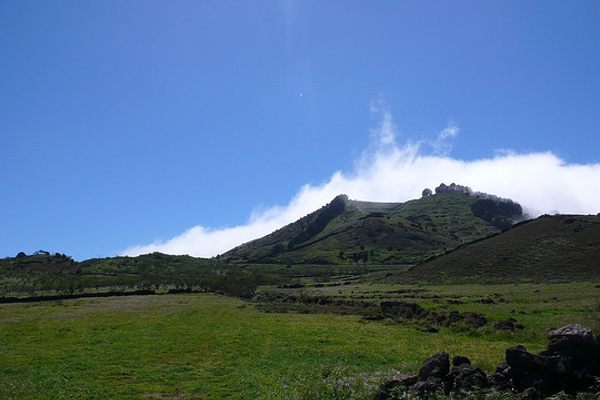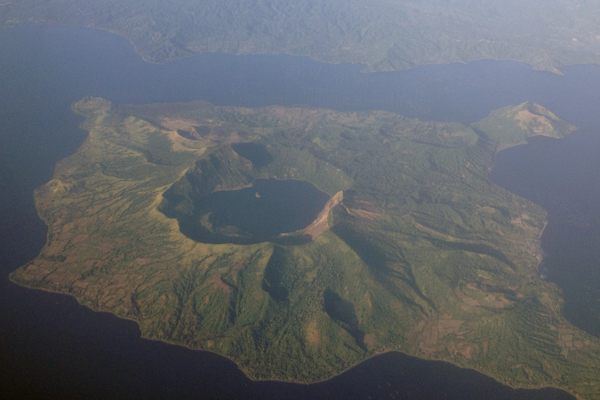Anak Krakatau
The second generation of a mighty volcano rises from the sea.
In the summer of 2009 the sky in Indonesia glowed an ominous orange as Anak Krakatau put on the latest of its fiery displays. Rising 1,200 feet from the waters of the Sunda Straight between the islands of Java and Sumatra, this volcano may be young - it is less than 100 years old - but it comes from legendary stock.
The fifth largest volcanic explosion in history happened in August 1883 when the volcano Krakatau exploded catastrophically. The explosions stretched over two days and triggered enormous tsunamis that obliterated 165 villages and towns and killed 36,000 people officially. Unofficially it may have been many more, as the official colonial Dutch records have been questioned in the years since.
Huge chunks of coral the size of freight cars were thrown onto shore and in at least one case a steamship was carried over a mile inland by a tsunami. Temperatures around the world dropped by as much as 34 degrees Fahrenheit that year, and spectacular sunsets as far away as Norway showed off the ash in the atmosphere.
It was not the first time Krakatoa had blown, and there were warnings of trouble. Passing ships noted columns of smoke and debris as early as May of 1883, but the area was not evacuated.
On August 26 a massive explosion was followed by several more the next day, and have been estimated to have had the force equivalent to 1300 megatons. Eyewitness Captain Wooldridge reported seeing “an immense wall, with bursts of forked lightning, at times like large serpents rushing through the air” from a distance of 40 miles, which after dark turned to “a blood-red curtain with the edges of all shades of yellow, the whole of a murky tinge, with fierce flashes of lightning.”
When it was all over only the blasted edges of one of the three calderas remained, and a small rocky island called Bootsmansrots (“Bosun’s Rock” in Dutch). The rest lay submerged 800 feet below sea level.
The seas were remained quiet until December 1927 when the first signs of an emerging island were seen. By August 12, 1930 the new volcano became a permanent island and was named Anak Krakatau: “Child of Krakatau”. Since then it has risen at a rate of 5 inches a week since the mid 1900s, and is now about half the height that Krakatau was when it erupted catastrophically. Its emergence was accurately predicted by Rogier Vebeek, a Dutch geologist who studied the explosion of Krakatau in the 1800s.
Anak Krakatau has erupted several times in its short life, including significant eruptions in 1992, November 2007, April 2008, and most recently in July 2009.
150 years later, hundreds of thousands of people live in the potential path of Anak Krakatau. Although no one knows exactly when will be a repeat performance, it is just a question of time.
After an eruption at the end of 2018 and the tsunami created by the collapse of a part of the volcano, certain aspects of the volcano are no longer visible.




















Follow us on Twitter to get the latest on the world's hidden wonders.
Like us on Facebook to get the latest on the world's hidden wonders.
Follow us on Twitter Like us on Facebook